
Bonsai is an art form that uses cultivation techniques to produce miniature trees in small pots that resemble their full-sized counterparts and has a history that stretches back more than 1,000 years in Japan. However, since the end of the second world war, the rest of the world has fallen in love with bonsai as well.
In this article we’d like to recognise some of the most influential bonsai artists from outside Japan. Those whose work not only exemplifies the art form itself, but who have furthered bonsai outside Japan.
The people listed below have their own bonsai businesses, regularly teach willing students, write articles, give demonstrations, win awards and much more.
If you’re on this list and would like to be able to share it with your audience, feel free to use this graphic on your own website to link to this article: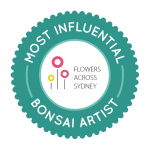
Bonsai takes skill, diligence, patience and an artistic flair that few possess, so we’re very pleased to present (in alphabetical order) the people that we believe to be the most influential bonsai artists from outside Japan.
Julian Adams, USA
Julian Adams has been active in the world of bonsai since the early 70’s and has been influential in both teaching and ensuring that keen students have access to plants and supplies, through his business Adams’ Bonsai.
My first real exposure to bonsai was a chance encounter at Pennsylvania’s Longwood Gardens in 1970. The visit was intended to see their vegetable gardens but the bonsai captured my imagination and changed the course of my life.
Can you tell us a little about your style/approach to bonsai?
Bonsai is a fascinating mix of art, horticulture, and philosophy. Art is hard for me but I have been able to learn a bit about bonsai aesthetics over the years. Horticulture is much easier for me. I enjoy propagating desirable species for bonsai and growing them to the point at which the individual plants become high quality prebonsai material. I keep some for my own use but enjoy making the majority of these available for use by those whose creative and artistic skills surpass my own. It is very enjoyable to see others add their artistic skills to the foundational material I have grown.
Do you have a quick piece of advice for beginners?
Beginners need to get guidance from those who have gone before through clubs, literature, the internet, etc. However, there is no substitute for hands on experience creating one’s own bonsai. With practice, one learns and improves. A great book for beginners is “BONSAI” by Peter Warren.
You can find out more about Julian on his website: www.adamsbonsai.com
Morten Albek, Denmark

Morten Albek is an influential bonsai artist from Denmark. He has written articles that have appeared in a variety of well-respected magazines, published a book on the topic and now reaches people all around the world with his YouTube channel.
My first meeting with bonsai was in my young days when I was at the gardener’s school, trained as a gardener and florist. This was before bonsai was really known. Why he had this bonsai and where he got his knowledge from, I do not know. The result of this afternoon workshop about bonsai was that I was hooked on it. I simply couldn’t let it slip my mind, and years later I began to grow bonsai myself after having a book about bonsai at my bookshelf for some years too. Regularly I looked in to it in periods, without having a place for bonsai. So I had to wait.
Can you tell us a little about your style/approach to bonsai?
My approach to bonsai has shifted a little over the years. I have always been attracted to the Japanese bonsai style, and still am. There are other approaches and experiments with the art, but the silent beauty and peace I find in the classic and original form is what pleases me.
I am less concerned with taking prizes and taking part in shows today than I was in my earlier days. I find the joy is in the daily care for my trees, serving them the best I can to bring them forward.
And not at least; just sitting and watching. Studying the details of the bark, branch formation, roots surface and leaf structure. Observing the shifting seasons through the trees. Finally. Learning that you can’t speed up anything with bonsai. It’s all about time and patience. From this you learn about life.
Do you have a quick piece of advice for beginners?
My best advice aimed at beginners is not too start too small. Do not sow seeds and expect them to be beautiful bonsai within a lifetime. Do not plant a pencil stick plant in a bonsai pot and wait for its glory.
A stick planted in a bonsai pot, will stay a stick in a bonsai pot, and not develop into a tree without free growth in the ground for some years. It will not happen within a decent time frame or before you give up on bonsai.
Buy a decent pre-trained tree or at least find a nursery plant already with a good trunk that you can form your bonsai from. A good start is the best start.
Get all the knowledge you can and listen to experienced people in a local club. Today many valuable lessons are also possible to get online. I have my self an online bonsai course to follow where you will get both design advice and growing techniques. Mix that with books and people, and you will have a lot of fun with the fascinating art of miniature trees.
You can learn more about Morten by visiting his website or YouTube channel.
John Armitage, UK
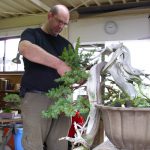 Hailing from Leeds in the UK, John Armitage fell in love with bonsai at a young age and by 16 was sitting on the committee of the Yorkshire Bonsai Association, where he would later become the main teacher and chairman. He has won numerous awards for his bonsai and is so passionate about smaller bonsai that he is now the chairman of the British Shohin Association.
Hailing from Leeds in the UK, John Armitage fell in love with bonsai at a young age and by 16 was sitting on the committee of the Yorkshire Bonsai Association, where he would later become the main teacher and chairman. He has won numerous awards for his bonsai and is so passionate about smaller bonsai that he is now the chairman of the British Shohin Association.
I started in bonsai aged around 12 years old after seeing a display of bonsai in a garden centre. At the age of 18 I began learning under Dan Barton and at the same time I opened a small bonsai shop in my home town of Leeds, West Yorkshire. At the same time Karate also played a large part of my life and my passion for bonsai waned in favour of karate. Although I still had a few trees I wasn’t that active. Around 2002/3 I decided to get back into it but in a small way. Ha Ha, it wasn’t long before it took over my life again. I recommenced my tuition again under Dan and later, Marco Invernizzi. In 2007 I decided to take the plunge and travelled to Taisho en nursery in Shizuoka,Japan. The nursery of Urushibata snr and jnr. I initially studied for three months and returned several times more staying for one month. It was here where I became hooked on Shohin bonsai.
Can you tell us a little about your style/approach to bonsai?
Bonsai for most people is a hobby and therefore it should be fun. As much as I dream about being a full-time bonsai professional, I know that this would take much of the enjoyment out of it for me.
For the foreseeable future I will remain in my day job and continue to teach, encourage and enthuse anyone that will listen about bonsai and in particular shohin bonsai. I try not to take myself too seriously.
The greatest damaging force to any bonsai is our egos. I try to be mindful of this and not to overwork or rush my trees to satisfy my ego. I do fail sometimes however! Step by step is the best way.
Do you have a quick piece of advice for beginners?
My advice is do not have too many trees. Only have the number of trees that you can comfortably look after. In the initial stages one collects, grows and buys everything to feed your passion and you end up with a garden full of mediocre trees at best that all need care.
Limit yourself to just a few each year but make the ones that you do obtain special. The material you select is also very important. You cannot make a good bonsai out of poor material and choose only plant that are suited to your garden.
This is one of the reasons I grow shohin. Time, space and finances are all limited and these factors seem to affect shohin bonsai less.
To learn more about John, check out Yorkshire Bonsai or John’s personal website.
Lee Cheatle, USA

The current President of the Bonsai Society of Portland, Lee Cheatle has been involved in with bonsai for more than 20 years. He has won too many awards to list here, has happily mentored up and coming bonsai artists and recently created the Mentorship 101 program.
My only exposure to bonsai early on was a book that showed basic bonsai. I do not remember even paging through that book but do have a visual memory of the cover. That was my earliest exposure to the art and I always found it fascinating.
About 23 years ago I was at a Christmas Bazaar hawking barbecue sauce and while on a break, I noticed a booth that was selling bonsai, mostly juniper Procumbens nana and sub-tropical like Ming Trees and ficus. I purchased one as a Christmas gift for my father in-law and the next day I bought one for myself. Then, as the story goes; I never looked back.
I tend to be a passionate genuine type of person and because of that I plunged into bonsai full on. I recently figured out, why it was at that time, it became my passion. My background is as an Executive Chef and that has been my largest creative outlet, that and carving ice. When I changed career paths and became a front of the house Food and Beverage Manager, that outlet was gone. It was soon after that, that I latched onto bonsai.
Can you tell us a little about your style/approach to bonsai?
Regarding approach and philosophy: I believe that is an evolving/ever changing perspective. Living in the Northwest has given me the opportunity to be exposed to more resident bonsai professionals than most areas of the America. Because of that, I have been exposed to several approaches to the art.
But currently, my feelings run very strongly in the direction of art being a reflection of our societal surroundings. So, I am and have been, for several years, creating what many of us are terming “American” bonsai. My interpretation of American bonsai is to use native material when you can but that no matter the material, to add anomalies or as most term, asymmetry; a shorter branch lower on the trunk, an unexpected open space between branch placement.
As John Naka often quoted, “don’t make your tree look like a bonsai but make your bonsai look like a tree” That is what I am striving to do and a good example of that is the photo of the Yamadori Sub-Alpine Fir below. Note, that like redwoods, it sends up miniature trunks, water spouts in redwood parlance, that is the way the species grows and I use it rather than go against it.
I also fell in love with wiring from the get go and my favorite expression of that I learned from Ryan Neil… “wiring is the paintbrush of bonsai”
Bonsai to me is not a hobby. It is an artistic outlet, it gives me the ability to create and recreate living art. I also believe that as an art, it can be many things to many people and that leads me to your last question.
Do you have a quick piece of advice for beginners?
I love to teach, it too is my passion. I tell my students many things but the one that comes to mind first is; I tell them to do it ala Nike, “just do it.” Don’t be intimidated or get paralysis by analysis/over think it.
Latch onto a mentor that you feel really knows how to do bonsai and can back it up with the trees they have.
Also, jump in but keep in mind the most important aspect of bonsai; healthy trees! You can work on the advanced techniques later.
Another aspect I find that is important: while I am mentoring students; I regularly remind them that it is their tree, not mine and in the end, they are going home with it. So, no matter what I prefer or recommend, in the end, it is their decision. Well you now have me writing about teaching bonsai and I could expound on that until your ears cried “enough”…so I will just stop.

Sub-Alpine Spruce, photography by Brian Lonstad
Lee doesn’t have a website or Facebook, but if you would like to get in touch with him, you can email him: leecheatle (at) msn.com
Nicola Crivelli, Switzerland

Having worked in graphic design and animation for a long time, Nicola Crivelli also has significant talents when it comes to bonsai. In 1999 he studied under bonsai master Hideo Suzuki and in 2006 received a diploma of Instructor at Bonsai Art School. As with many of the other artists in this article, Nicola has won too many awards to mention.
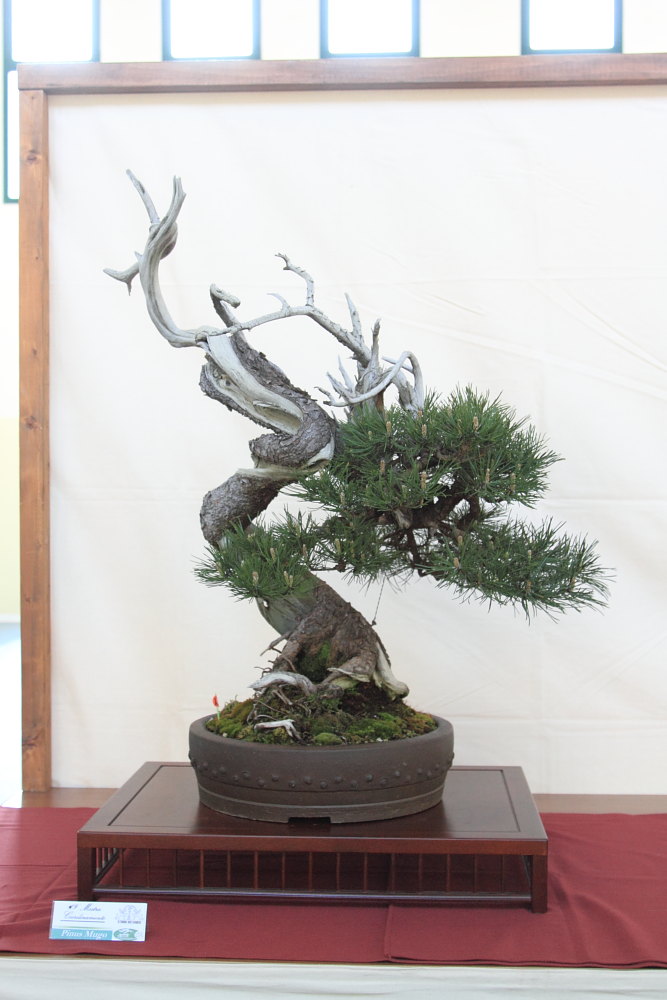
Here’s a bonsai that won Nicola the Black Scissors Trophy at Gaggiano in 2017
To learn more about Nicola, visit his website.
James F. Doyle, USA

I always loved horticulture, science, art, and Asian aesthetics. This combination led me to bonsai as I grew up with a background of organic farming, a degree in horticulture, and the art of dance. All of these things played a part in leading me to many bonsai mentors who enthusiastically shared their knowledge with me. I now try to carry on with that sharing spirit which taught me so much.
You can learn more about Jim on his website: www.natureswaybonsai.com or his Facebook profile.
Can you tell us a little about your style/approach to bonsai?
Because bonsai is an art, it should forever be changing along with its display. We should wake up each morning and look at our trees as if it were the first time — to see their suggestions. Plant and people communication is ongoing and we are just starting to understand this interaction.
Do you have a quick piece of advice for beginners?
Never be afraid to try something new… whether it be a design, technique, or something that’s just simply not in the “books.” Start inexpensively.

Lindsay Farr, Australia
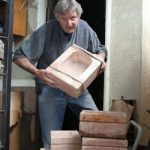
The lone Australian to make our list, Lindsay became fascinated with bonsai as a five year old when he saw a bonsai book. After a career overseas as a musician, Lindsay returned to Melbourne and set about turning his dream Bonsai Farm into reality.
During this time he also taught at numerous TAFEs, the Chinese Museum and the Council of Adult Education. He has also formed the Bonsai Academy of Australia. He has also become the “go-to” guy for TV spots in Australia when a bonsai expert is required. He has also produced a popular video series “Lindsay Farr’s World of Bonsai”, which you can view on his website.
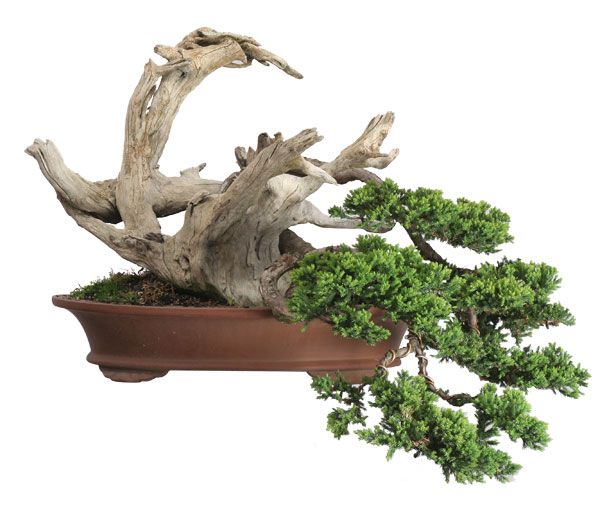
As its carer, Lindsay tells us he can’t have a favourite bonsai, but this is one he is particularly fond of
Michael Hagedorn, USA

Michael began his journey at the age of 15 and has become one of the most influential bonsai artists in the US. He has trained for several years in Japan, has written his own book, publishes content on his own website and has a wide variety of bonsai in his own garden. He explains how he got started in bonsai:
A Sunset Garden book on Bonsai when I was fifteen, found it in my parent’s library. I was growing cacti at the time, and Japanese art was something that I’d admired and was already influencing my artwork. Bonsai was a perfect marriage of two compatible interests, art and plants. Since high school I’ve always had bonsai, not very many for some time, but I’ve made nearly every mistake that the majority of us have made, and a few more besides.
Can you tell us a little about your style/approach to bonsai?
One part of bonsai that I find particularly resonant is the chance for the artist to be a bit invisible, when the tree after years of training is its own spokesperson again. When we let go of our grip on the microphone, we become infinite.
Having just moved to a city I am aware of urbanization, and these days think a lot about what is wild. I am arrested by natural beauty, the kind of beauty that is not created but born, and how we can be a part of that or against that. Minimizing a tree’s natural beauty is almost like cooking a vegetable until it’s most definitely dead. I like trees that breathe. That have a life I’ve not agreed to.
The use of collected trees, even deciduous, as ‘found objects’ has allowed some exploration of these themes of wildness and naturalness, somehow trying to juggle that within the traditional framework, which I find very beautiful as well, and necessary to a point.
Also the minimization of the bonsai container to the point of it vanishing completely has had continued relevance in my recent work (a bit ironic given that I’m a potter), which maybe brings the tree into the foreground. At least that’s the intention.
The raw values of wabi-sabi continue to guide my work. I really don’t think we’re doing bonsai any more when we stray too far from the original aesthetic values that gave birth to bonsai, and those are less about how something looks than how it feels.
‘Beautiful things don’t ask for attention.’ — The Secret Life of Walter Mitty
Do you have a quick piece of advice for beginners?
Don’t have too few trees. Get enough so you can keep occupied, and learning, and most importantly not be nags to our trees. They need a break, they need to grow. And don’t specialize too early. Explore.
Ultimately about 20-30 trees is more than enough for even serious, skilled enthusiasts to keep in top shape. The most useful study is from blogs, videos, and especially in-person teachers—all those are preferable to books.
First with the head, then with the heart. Study the tradition first, get the pesky technical things down first, before venturing into the experimental and creative.
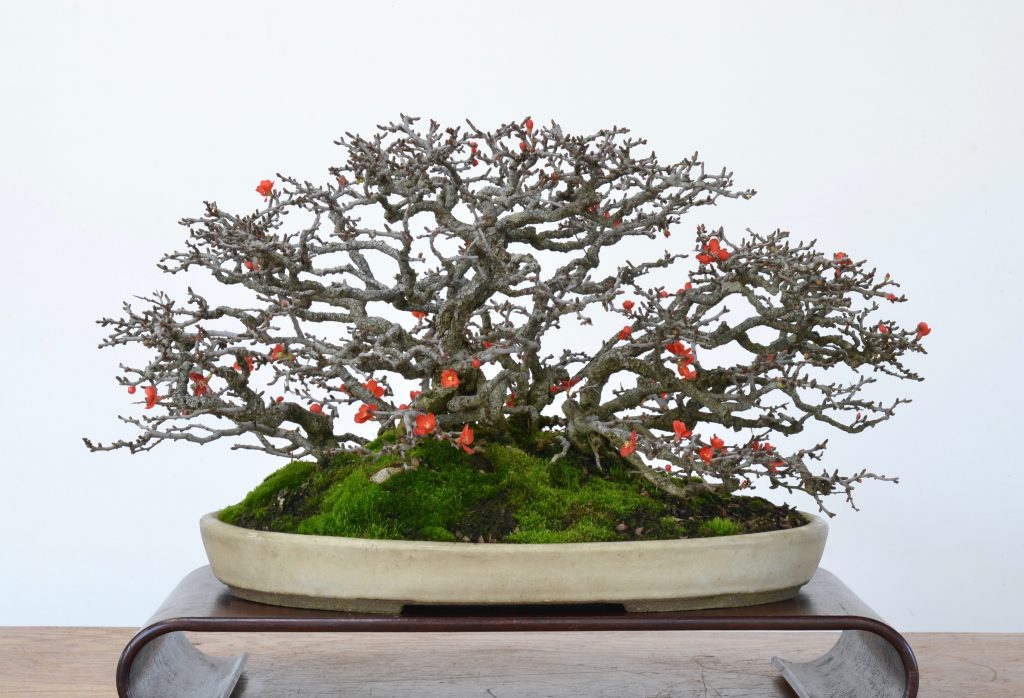
To learn more about Michael and his bonsai, visit his website Crataegus.
Marija Hajdic, Croatia
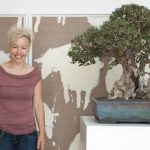
My mother taught me a lot about plants. My father had a period when he was into bonsai in the mid 1990s. I used to watch him working but was not particularly interested.
He had a book by Peter Chan. One sentence from the book, which was talking about finding old materials in nature and their collecting, captivated me: “How can one skip time?” It was sometime in 1999, I do not even know how, that my friend and I started combining our studying for exams at the university with trips into nature, looking for and collecting material for bonsai.
At the time some information about bonsai could be found on the internet, with the American forum, BonsaiTalk pretty active. I used to order books from bookshops abroad, but the information in them was of little use because there were not species in them that I was interested in. Speaking from the present point of view, I`d say that I had a drive but there was a lot I did not understand. Anyway, it was much nicer spending time outdoors than in the library studying.
In 2000 Andrija and I met, and we set off on a more serious journey of studying bonsai together. In 2007 we have invited Walter Pall to come to Croatia and then real bonsai adventure started. At the end of 2017 we ended our relationship and split bonsai collection that we have built together. I have my own bonsai studio now.
Can you tell us a little about your style/approach to bonsai?
Bonsai is an art form. Naturalistic style is closest to my taste.
For me, bonsai is just medium for my inner personal travel, with the aim of extedning boundaries of my parception and intellection of reality.
I like to work with yamadori trees, and always trying to find something new, with unusual features, impressive character. What nature can create in its spontaneous way over a long period of time, cannot be done by any gardener.
It is very important to know how to recognize potential of material in nature. It is very difficult to make good bonsai from poor material. When you go through several cycles with the material from the moment of collecting, positioning in the pot and shaping, and when you see and feel what you can get from what, the limits of perception are pushed further, and the next time you are in nature, you see more and better. If you try to improve your work, then you do not move in a circle.
I like to bring home a “problem” – a task to solve, a strange tree that spoke to me, a tree with which I would have fun in the process of making obvious what was only suggested when it was in nature.
Do you have a quick piece of advice for beginners?
Find bonsai people that inspire you, and if you have possibility learn from them. If bonsai is what make you happy be persistent, for quality results you need to develop and work for years.
Imported trees are fine, but try to work with trees from your region / country. Enjoy!

Prunus cerasifera – Wild plum – Nominated tree at Noelanders Thropy 2018
You can find Marija on Facebook.
Christine Hayward, USA
My interest in small trees began in the 70’s with one of the first English language books on bonsai that my father had purchased for my mother after they had taken a trip to Japan. This was “The Japanese Art of Miniature Trees and Landscapes”, by Yuji Yoshimura, written in the late 50’s.
I was fascinated by photos of a broom style Japanese elm and a blooming wisteria. Having never grown a plant, I had much to learn and eventually joined a club in Boston, Massachusetts. I read everything I could find, met people, took workshops and attended conferences. Along the way I had bonsai displayed in the Boston and Philadelphia Horticulture Exhibits and regularly showed trees at William Valavanis’ yearly seminars in Rochester, NY. I attended the first World Bonsai Convention in Japan, 1989, returned several times and visited gardens in China, Hong Kong, and Europe. Many of my friends have come from the bonsai community.
My collection includes a variety of collected and cultivated species, some imported, some from propagation, and pines and larches I have collected in the Northeast, USA. I have displayed three bonsai at the US National Exhibition, and a fourth, one of my collected Pitch Pines, has been accepted for this coming September.
Several of my trees have appeared in books. Now living in Connecticut, I am active in my local and regional groups, setting up shows, giving lectures, demonstrations and workshops. It is the process, developing and styling these little gems, that gives me such pleasure.
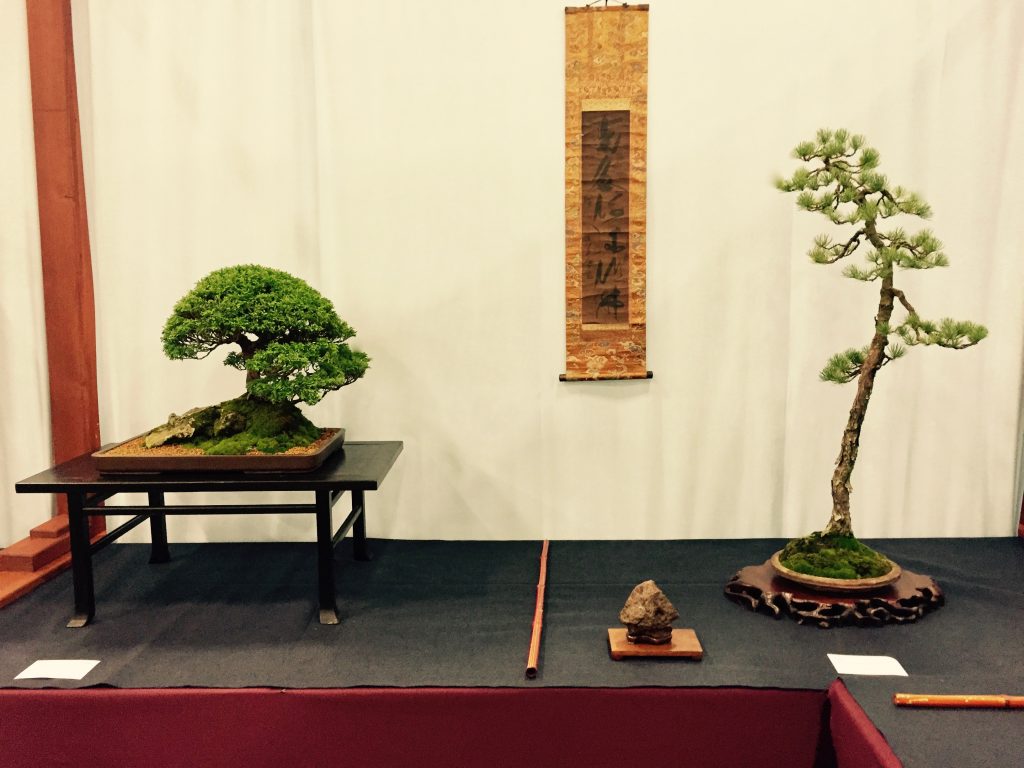
On exhibit at the 5th US National Bonsai Exhibition, 2016. The one on the left is Chamaecyparis pisifera “tsukumo” on a stone from the Ibi River in Japan. On the left is my Literati style Japanese white pine, Pinus parviflora, in an antique Chinese container. Both are about fifty years old.
Marco Invernizzi, Italy
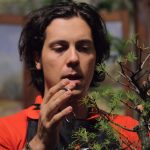
Born in Milan, Marco Invernizzi is widely considered the world’s youngest bonsai master. His love affair began after watching the Karate Kid and since then served a three year apprenticeship under Masahiko Kimura (considered by many to be the greatest living bonsai master). He spends much of his time now travelling the world conducting workshops and giving demonstrations. He has also written extensively in publications and in 2003 published a book on his training in Japan.
You can learn more about Marco on his website www.marcoinvernizzi.com
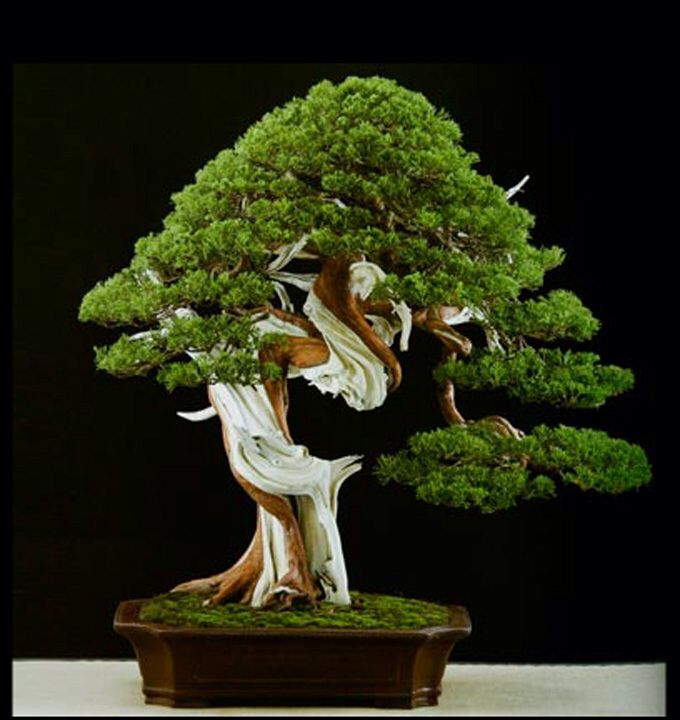
Rob Kempinski, USA

I worked on the International Space Station with the Japanese Space Agency and learned Japanese and their culture. That generated interest in Japanese gardening and led to bonsai. I say “bonsai are like potato chips, no one can have just one.”
You can contact Rob through his Facebook profile.
Can you tell us a little about your style/approach to bonsai?
As an art form, bonsai requires emotional connection. Design your trees to make some type of emotional statement by picking a goal and growing the tree to that goal. Use anything to inspire you, for example, the Kraken was inspired by the legendary sea monster. Get creative aand “think outside the pot”
Do you have a quick piece of advice for beginners?
Learn as much as you can from people that have good trees. Once you have learned, start with the best possible material so that your trees can be the best they can be.

Willow Leaf Fig inspired by a vision of a post apocalyptical Chinese Wax factory
Jarek Lenarczyk, Poland
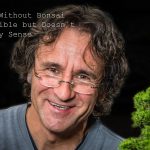
Born in Poland but now living in Germany, Jarek Lenarczyk is fortunate enough to be a professional bonsai artist. He studied in Europe for several years early on in his career, then took his training to the next level by travelling to the renowned Taisho-En in Japan.
In addition to working on his own bonsai, Jarek spends a lot of time appearing at events around the world, writing for magazines and showing his bonsai at competitions.
You can connect with Jarek on Facebook.
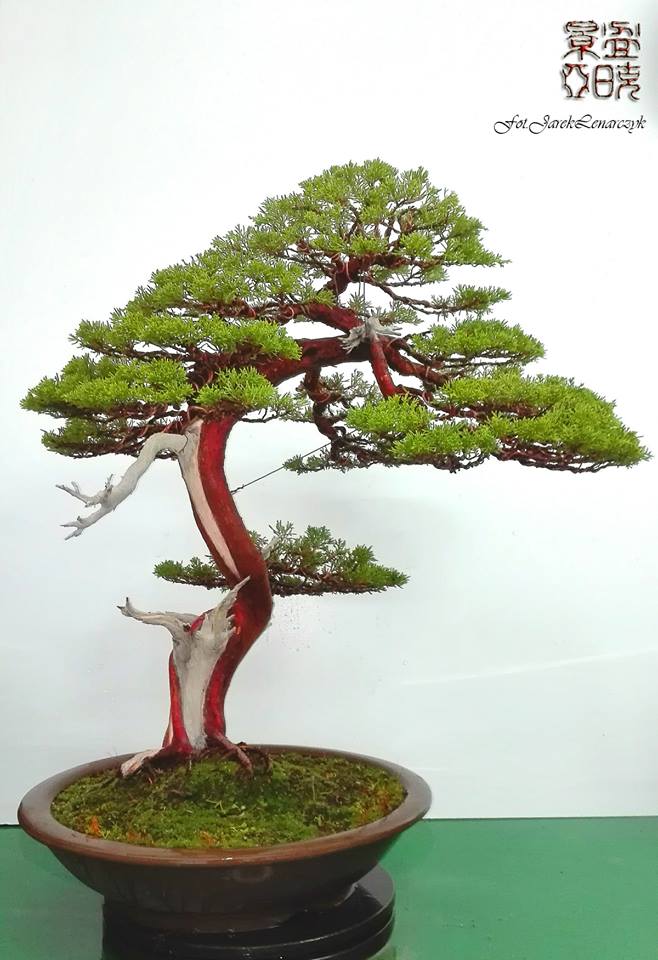
Bunyarat Manakitivipart, USA
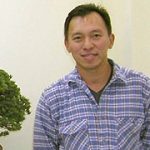
Boon took his first steps into the world of bonsai by taking a beginners class at the Bonsai Society of San Francisco in 1989. After seeking out tuition in California, he hosted bonsai master Akio Kondo. Later, he became an apprentice of Kihachiro Kamiya.
In 2000, as the only non-Japanese entrant, Boon won the Grand Prize in the Kindai Bonsai Shaping Contest. He has since won more awards than we can list here.
He started his business, Bonsai Boon, in 1998 and the World Bonsai Contest recognized Boon’s trees in 2000, 2001, and 2002 as among the world’s top 100 entries, and his students’ trees have been recognized in every contest to date.
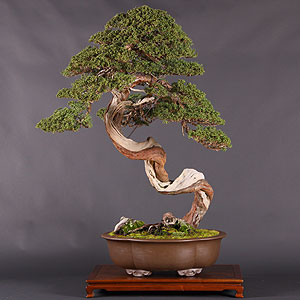
“Ascending Dragon” Shimpaku Juniper (grafted on Sierra Juniper trunk)
Hans van Meer, Netherlands

Hans still has vivid memories of the day he discovered his passion for bonsai. He was given his first bonsai by his wife as a birthday gift in 1990; an Ulmus parvifola from China:
That first time I looked closely at the roots that grabbed into the moss covered ground, combined with the smell of a wet forest right there in my living room, did it for me. I was sold for life. Looking back at this first bonsai now, I know it wasn’t really any good, but this little tree and my lovely wife that gave it to me, changed my life for good!
In 1997 he entered a shohin “potentilla fruticosa” created from gardencenter material into the Dutch Bonsai Federation Show (NBV) and won Best of Show award. Later he entered that same bonsai along with two of his other self-styled Bonsai into the first edition of the “Gingko Awards”. There he met his good friends from England: Tony Tickle, Mike Sullivan and Terry Foster who invited him to come collecting in the U.K and Wales.
In 1998 he collected his first yamadori in Wales with those same friends. Since then, every year for a few weeks he makes long travels from Holland up to the mountains of Austria, Switzerland, Italy and Slovenia to collect his own material to work on.
In 1999 He demonstrated and showed his bonsai at the European Bonsai Association (EBA) in Stratford U.K, and since has shown his self-styled Bonsai all over Europe and in almost all “Noelanders Awards” and every edition of the “Gingko Award” and was proud to be one of the demonstrators in the last edition of this groundbreaking event. He immensely enjoys sharing his bonsai knowledge with others and has given demonstrations and workshops all over Europe and in the U.S.
Can you tell us a little about your style/approach to bonsai?
My views on bonsai, and especially on bonsai teaching, seemed to be so far off from what some of the more experienced bonsaist and stubborn newbies were preaching online, that we sometimes ended up in pretty heavy debates.
Nowadays I don’t feel the need so much to join in debates that I know right from the start will end up unresolved and in anger, because some people are so fixed on their beliefs, and will defend them no matter what, without even trying to listen to anyone or anything. They will even go right up to the point where it gets personal and mean.
Do you have a quick piece of advice for beginners?
You should not make it too difficult for the newbies with all kinds of foreign words and useless information they don’t need at first. Let them enjoy and learn while they are actually doing bonsai themselves. Let them decide their own pace of learning, and the level they want to practice bonsai in.
Whatever you do, don’t force your own styling opinions onto there virgin minds. Don’t spoil their imagination. With the more experienced bonsaist, I will try to explain and teach all the important things that come after you have learned the rules. I teach things such as negative space, rhythm, balance, movement, visual speed, and other important principles that make the difference between a bonsai and a good bonsai.
The best example of this happened during those now famous “Burrs” bonsai weekends in the U.K. organized by my good friend Tony Tickle. More than 30 men from as far away as Spain were locked away for a whole weekend, with top material, in a beautiful old bunkhouse, in the middle of nowhere, with a pub just across the road.
Many artists like Tony Tickle, Terry Foster, Enrico Savini, Pavel Slovak, Peter Warren to name a few and I were working together with beginners and good artists alike. All those guys from different countries and cultures, working on their own and each other’s trees, in perfect harmony for two long days and nights.
It was absolutely brilliant. No egos, just bonsai. This is what the ideal bonsai workshop should be like. No fuss about rules or traditions, just totally relaxed freestyling with the material, only learning how to work with the tree and the intuitive part of your brain.
The outcome of many of the trees that were worked on in that weekend was amazing. For example, I worked there together with Enrico Savini from Italy who has a more traditional way of styling his wonderful bonsai than I do. But there were no clashes of styles there.
Only merging of what worked best to create a thing of beauty. This is the way I believe modern bonsai should be practised to become a true individual art. It should not matter if your bonsai is styled strictly traditional or with a mixture of every style if necessary. It is only the end result that counts when judging if it is a good bonsai or not, and hey, even old traditions hat to start somewhere, don’t they?
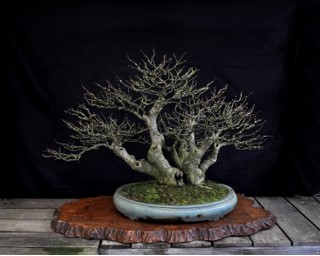
ilex verticillata 5 trunk urban yamadori
Pauline Muth, USA

In the 1970’s I was representing our local greenhouse growers club at a regional museum exhibition that included a fairly new bonsai club, Mohawk Hudson Bonsai Society.
On the Saturday, the weather outdoors was brutal and kept away the public. A representative of the bonsai society was at the information table next to mine and asked me if I would like to make a bonsai with him. I did and became fascinated by the art.
The person was Earle Pudney who over the years became a good friend and mentor. I took lessons from him for a few years and then he convinced me to start attending the club. He said I must attend the next demonstration. As it turned out, the demonstrator was John Naka. I was seated front and center and totally involved in the presentation. (On a side note, I now own that demonstration tree which was won by Josie Biondo and many years later given to me)
Josie Biondo, a founding member of the club, became my mentor and brought me to many conventions. That club became my support and encouraged me to open my teaching bonsai studio in 1990. As Josie once told me, always pay it forward. Encourage others and help them in any way you can. I hope I have lived up to her example.
Can you tell us a little about your style/approach to bonsai?
In doing bonsai, we show our idea of what nature is like at her best. We become expert observers of trees around us and try to apply what we have learned to our bonsai. It is an art and in being such expresses our ideals of nature. Above all, it should bring peace and joy to the artist first and then , hopefully , the viewer.
Do you have a quick piece of advice for beginners?
Learn from everyone. No person knows everything. Bonsai are living things. Living things die. Learn from each failure and each success. Experiment and enjoy.
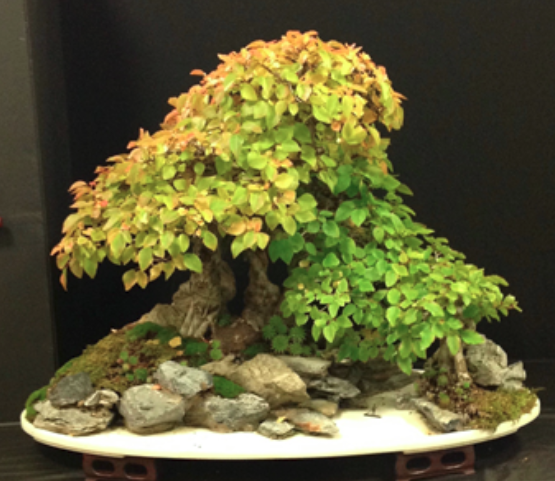
You can learn more about Pauline and her bonsai at her website: www.pfmbonsai.com
Ryan Neil, USA
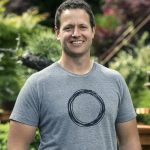
Ryan Neil is one of the younger bonsai masters in the US. He undertook his first internship at the age of 12, has studied under Masahiko Kimura and since opening his own nursery, Bonsai Mirai, his client list has become so exclusive that he often has to sign non-disclosure agreements.
I first got started with bonsai in a serious manner during my college years in California. I was introduced to the concept of Yamadori through a visit to local practitioner’s garden and was deeply inspired by the forms and ancient present in the trees.
I collected material in the Sierra Mountains throughout college and actively worked with several bonsai professionals in the state before deciding to pursue an apprenticeship with Masahiko Kimura in Saitama, Japan.
Can you tell us a little about your style/approach to bonsai?
I approach bonsai as a medium that can bring about a bigger discussion about our society, social issues, and our relationship to our environment. Bonsai as an art form and practice is extremely wide open in terms of interpretation.
What speaks to me personally is being able to use these really old trees collected out of very rugged environments and utilizing their native shapes to illustrate our native landscapes so that my final compositions are able to create a deep connection/impact within any viewer.
Do you have a quick piece of advice for beginners?
I suggest to all beginners to seek out the most accurate and scientific based information that is available to them. There is a lot misinformation in the world of bonsai, particularly anecdotal information that can lead practitioners down the wrong path.
Thankfully thanks to technology and research being done in horticulture, we are quickly moving towards another golden age of bonsai where we will all be better equipped to make informed decisions that will elevate the level bonsai across the board.
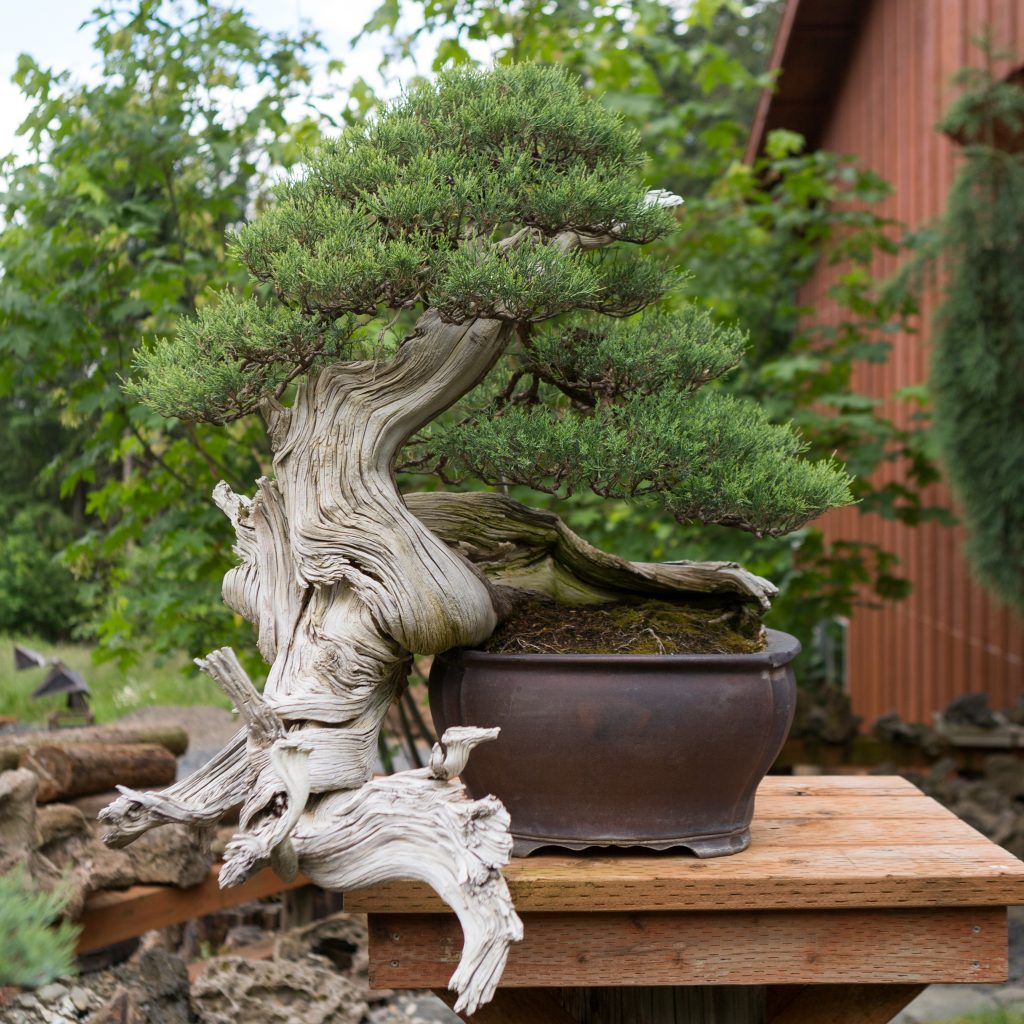
Rocky Mountain Juniper #1
Vaclav Novak, Czech Republic
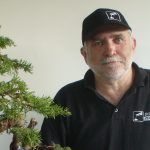
In 1990 Vaclav established Bonsai Centrum in his home town of Libochovice. Since 1999 he has been fortunate enough to be a full time bonsai guy. He has exhibited bonsai in England, France, Belgium, Italy, Germany, Spain, Poland, Slovakia, Mexico, South Africa, Brazil, USA, Vietnam, China and others.
His interest in bonsai growing arose after the lecture of Mr. Hideo Kato which was held in Prague in 1982. At first bonsai growing was only his hobby but later it became also his job. He is also co-founder of Bonsai Club Libochovice. It was founded in 1990. The Czech Bonsai Association (CBA) was founded in 1997 on his initiative. He was elected its president on the establishing convention of CBA. You can learn more about Vaclav and his bonsai here: www.bonsai-novak.cz
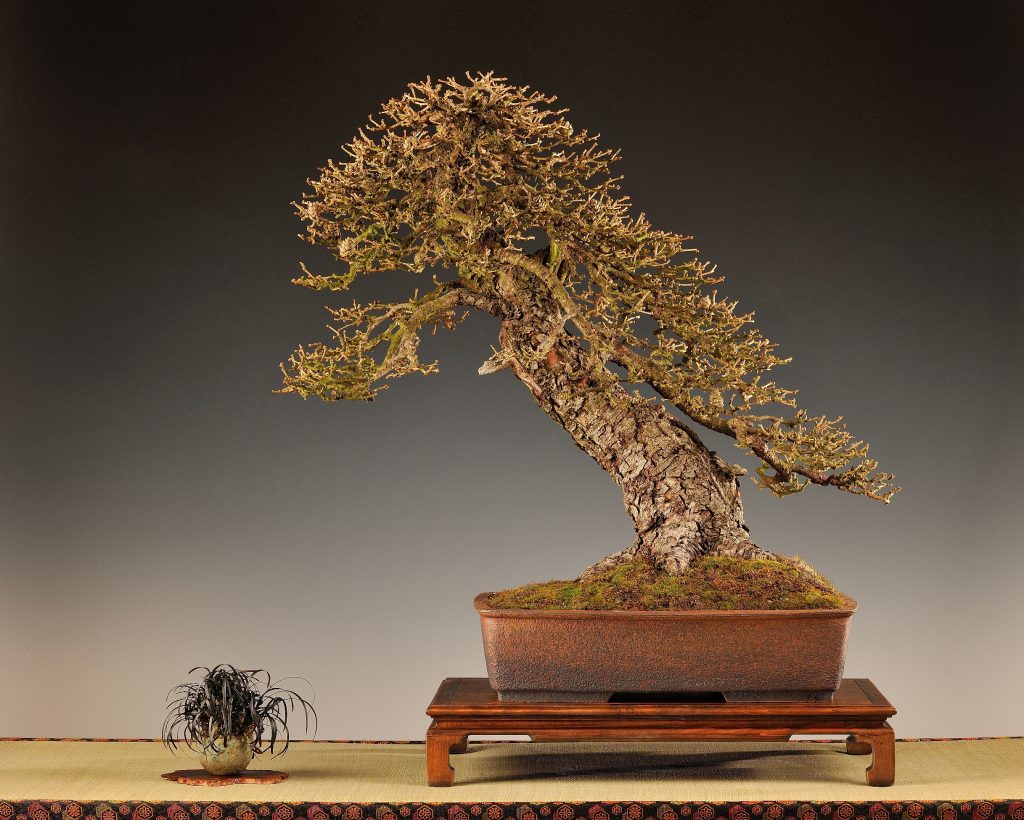
This is Larix decidua. Larix was demo tree for 20th year on the first Czech National Bonsai Exhibition 1998.
It is yamadori from my country Czech republic.
Wolfgang Putz, Austria

Wolfgang Putz is a garden and landscape designer from Alberndorf, Austria. In 1984 he had his first contact with bonsai with the state bonsai collection in the alpine garden of the Belvedere Palace in Vienna. He began with the gathering of trees (especially through small-grown hornbeam and red beech from the forests of my environment)
His dalliance with bonsai became more intense in 1994 and currently has around 175 trees in his collection that include many self-collected yamadori. In addition to his bonsai, Wolfgang has more than 600 side plants to look after.
He has also been very successful at showing bonsai, placing in the top 100 at the JAL World Bonsai Contest in 2000, 2001, 2002, 2003, 2004 and 2005. You can learn more about Wolfgang and his bonsai here: Yamadori Bonsai
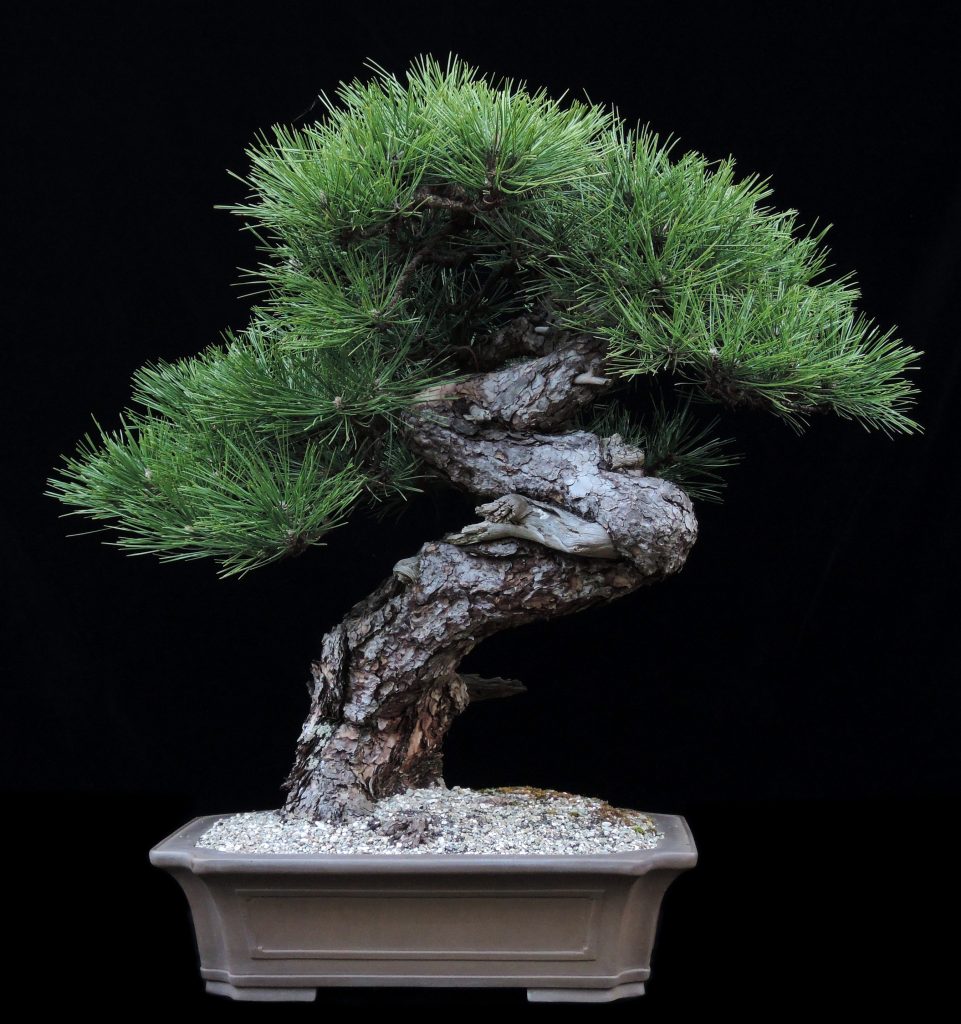
Austrian Black Pine, collected in 2000
78cm tall, more than 200 years old and styled since 2003
Sara Rayner, USA

Sara Rayner is a professional potter from Minnesota, USA and has spent the last 14 years exclusively on bonsai pots.
She first discovered her passion for bonsai some 20 years ago at an IBC convention in Minneapolis. She then joined the Minnesota Bonsai Society and has been an active member since. Much of her time is taken up with bonsai pot production and attending various conventions around the country. Some of it is reserved for her real passions, which include maintaining a manageable collection of bonsai trees, and serious bird watching. You can see Sara’s gallery here.
Can you tell us a little about your style/approach to bonsai?
I tend to go more by the book. Not because I feel I need to be told which pot is the proper pot for my tree, but that the traditional guidelines are based on the same artistic and visual principles that tell you when a composition is balanced. That balance must have regard to color, form and texture.
The guidelines exist, but are not always explained. Some of it seems obvious. A formal upright tree looks unbalanced in a round pot, and a tree with a 3 inch trunk looks like its being swallowed up by a 5 inch deep pot. But a great deal of it is not obvious. I truly believe that selecting a “perfect” or at least appropriate container for a given tree is a learned skill, something that comes with time and experience. After a while the selection process becomes automatic. I haven’t reached this point yet, but there are some things I don’t question.
To this day I have yet to see a pine or juniper look convincing in a glazed pot. Why not, other green trees work in them? Maybe it’s that glazed containers have a feeling of liquid or water, something not usually associated with a needle tree.
The subject of container selection is highly debated among bonsai enthusiasts, and I wouldn’t know where to begin or stop with it, so I will sum it up: Study the guidelines; study the art of bonsai; look at a lot of quality trees, and practice.
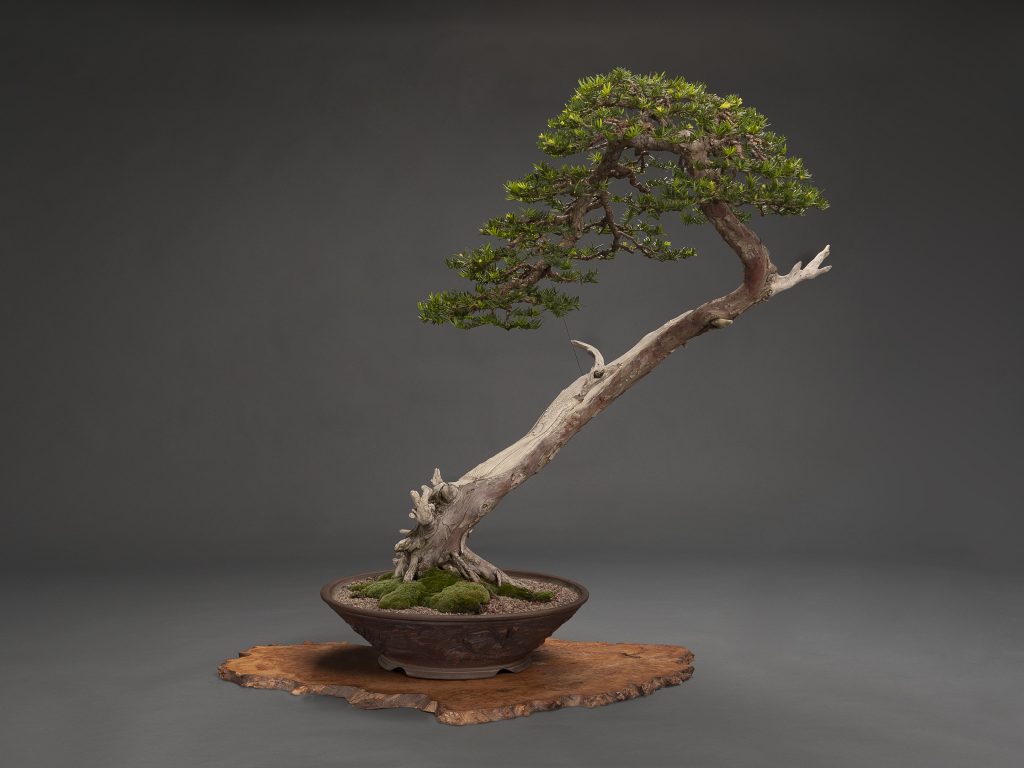
Dan Robinson, USA

Considered to be the father of the American school of bonsai, Dan Robinson has been involved with bonsai in one form or another for almost 35 years. He has written a book, taught numerous students and even had one of his bonsai acquired by the National Arboretum.
How did Dan get started with bonsai?
I was working my way through college by collecting larger landscape material to sell to nurseries and landscapers. Occasionally I would come across a gnarly stunted tree, and realized that this was what the Japanese collected and put in pots. As it turned out, I actually started with the best of bonsai material. The stunted naturally shaped trees drew me in and I was hooked.
Can you tell us a little about your style/approach to bonsai?
I was the first Bonsai artist to offer a distinctly American style when all others were simply following the Japanese formulas. I feel that a more natural approach truly represents my dedication to telling the tree’s story. American bonsai is bold and artful. The Japanese style seems to tame the tree. American bonsai celebrates the wild, the travails it has overcome and the continuing struggle to survive. I believe that a flawless top on a gnarly ancient trunk dismisses the real story. I like the idea of a bird being able to fly through the branches of a bonsai tree.
Do you have a quick piece of advice for beginners?
Start with a great trunk. Starting with a seedling is unproductive and frought with time waiting for it to become great. It’s a 200 year plan. Growing a top is easy. So start with an interesting or exciting trunk.
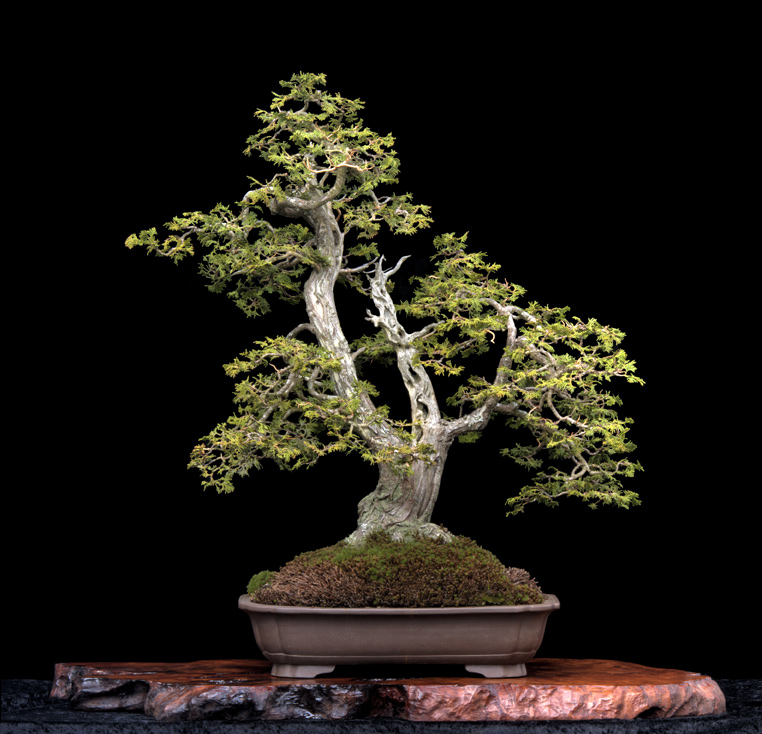
You can learn more about Dan and his bonsai at his website.
John Romano, USA
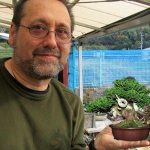
John’s love of trees began when he started helping his grandfather with his fruit trees. Since then he has appeared at numerous shows, won plenty of awards, written articles for several top magazines and has spent the last decade or so teaching students in New England.
My bonsai school name is Kaikou which is an old Japanese term meaning ‘crossing paths’ or ‘unexpected encounter’. My first crossing paths with trees was as a little boy living with my parents and grandparents. My grandfather was from Italy and had a beautiful garden with fruit trees.
I would watch him pruning and caring for his trees and was enamored with them and his love for them. In college (1973) I next encountered the Bonsai Collection at the Arnold Arboretum in Boston, Massachusetts which is the oldest collection of bonsai from Japan in the US. This jump started my study and practice of bonsai. My specialization with shohin bonsai came with my encounter with Suthin Sukosolvisit, a premier shohin bonsai artist in the US.
Can you tell us a little about your style/approach to bonsai?
My philosophy of approaching bonsai is part of my overall philosophy in life of appreciating and interacting with nature. Learn about trees in the wild, how they grow, how they exhibit beauty and style and bring that to your approach to bonsai. And, I would say that health is always paramount over beauty – meaning in a practical sense, that you need healthy bonsai before you can style them.
Do you have a quick piece of advice for beginners?
My most important advice would be to find a good teacher to start your study with. Although there are a few professionals who self taught, it is much more advantageous to learn from someone who is proficient at it.
Secondly, have an open mind with your chosen teacher. There is a lot of bad information on the internet and in old books that you will probably assume is true but can be corrected with better information.
I firmly believe that the way to learn is with someone and by doing it repeatedly, not by reading on the internet, watching youtube videos, or books (I guess I am old school in this regard!) Thirdly, be patient with yourself – bonsai is a process more than anything else – and a life long one at that.
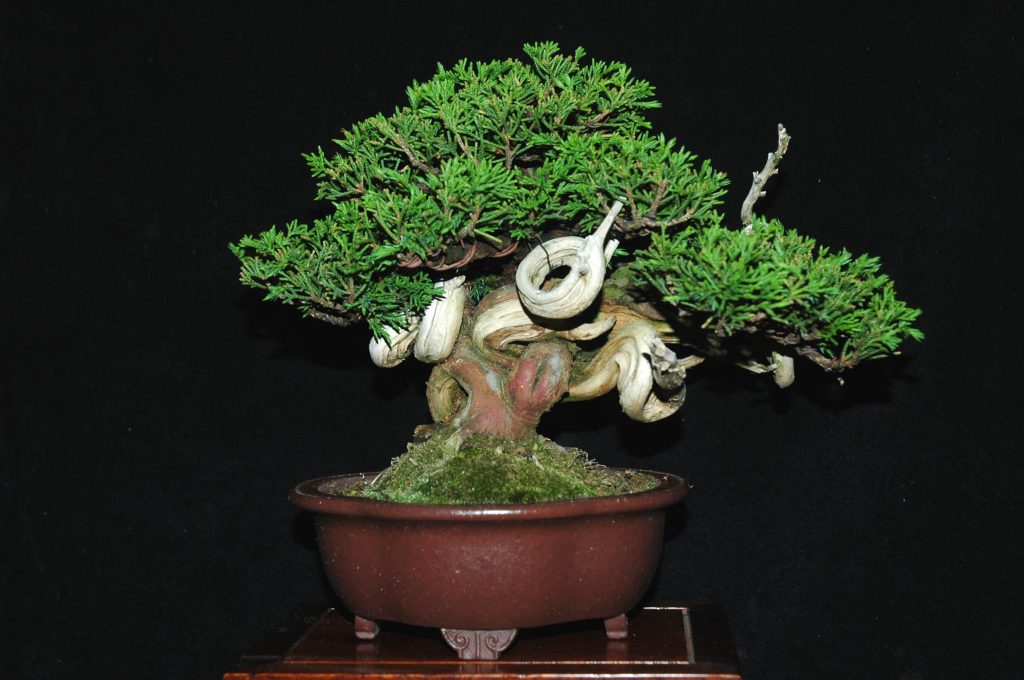
You can learn more about John and his bonsai at his website Kaikou Bonsai.
Pavel Slovak, Czech Republic
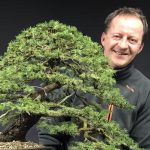
Born in the small village of Vigantice, Pavel didn’t discover his love of bonsai until he was 21. Since then his passion has only increased and a clear turning point in his bonsai career came in 1998 after meeting Mr Jaroslav Pisl.
Since then he has competed in many events, winning several such as the NT CBA contest in 2001 and the French Travarez EBA NTC in 2002. In the same year he was also awarded “Personality of the Czech Bonsai Scene”.
In addition, Pavel has taught and given exhibitions in just about every country in Europe, as well as Israel, Australia, and China. You can find Pavel on Facebook.
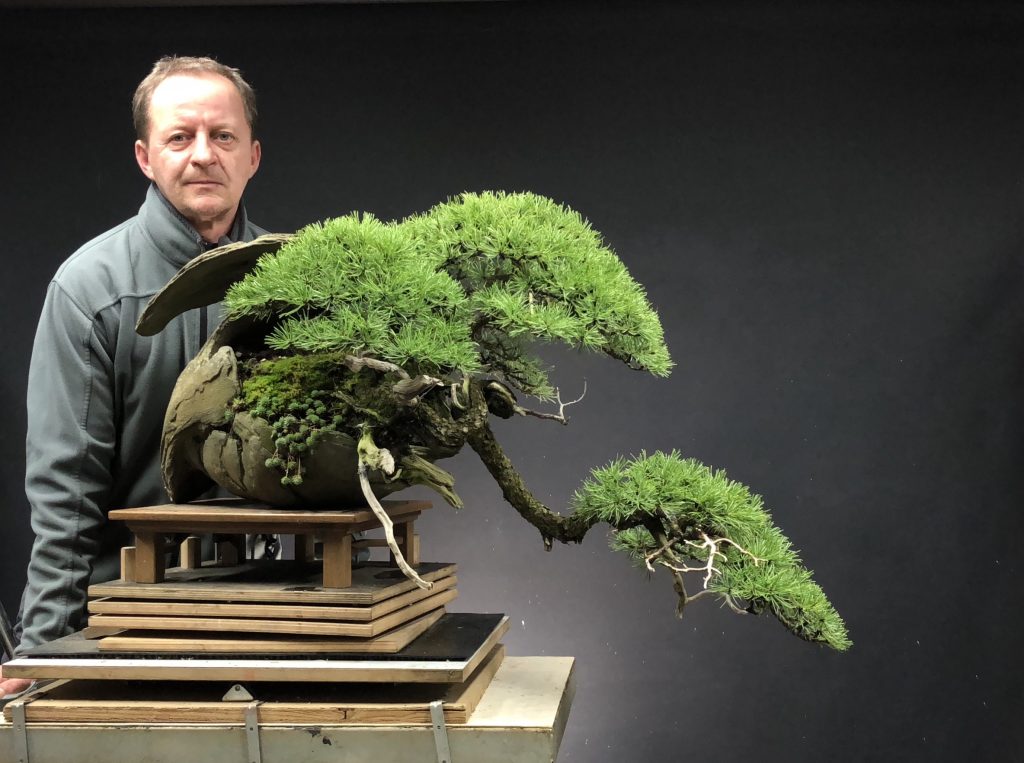
Andrew Smith, USA
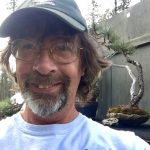
My wife, Judy, and I run a private forestry business. In 1991 while doing a timber cruise in the Black Hills Judy sampled a ponderosa pine that is now known as the oldest verified pine in the Black Hills, currently around 757 years old. I got kind of obsessed with that and thought if there was a 700 year old pine, why wouldn’t there be a 1,000 year old one? So I began searching for a 1,000 year old pine, taking core samples with my increment borer and counting the annual growth rings.
There probably is a 1,000 year old pine in the Black Hills, but I did not find it because nearly all the very ancient trees are rotten in the middle and you can’t get a usable core sample to count. I did find a 900+ year old juniper and quite a few 500 to 600 year old trees and eventually that led me to get a contract with the Forest Research Center to collect core samples from trees over 400 years old to use in reconstructing climate history by analyzing the pattern of growth shown in the tree rings.
While I was working on that I thought it would be interesting to sample some of the contorted “seedlings” I saw up on the rocky sites where I was finding the old pines. The growth rate average for the forest as a whole is 15 years for a seedling to reach a height of 4.5′ tall. I knew these seedlings were growing slower than that, so I thought they might be 30 or 40 years old. I was amazed when many of these 30-36″ tall trees showed ages of 100 to 150 years!
We had been tree planters for five years and I immediately decided that when spring came I would transplant one of these “seedlings” into a bucket and grow it on my porch. Then I’d have a 100 year old tree on my porch and no one would believe me. As I was planning all this out Judy came home one day with a gift for me -a tiny bonsai tree from K-Mart. I realized right away that that’s what my pine in a bucket really was -a bonsai! So I was hooked!
Can you tell us a little about your style/approach to bonsai?
Bonsai takes time. It’s really about caring for something very carefully over a period of years, decades, centuries even. You can wire a tree in two hours, but the care it gets in next 50 years matters a lot more in how the tree actually develops. I think my most favorite bonsai is the Yamaki Pine at the National Arboretum. It’s been in training as a bonsai for 400 years and it’s a fantastic tree. But it was collected as a seedling and probably for many, many years it was nothing special at all. But all those generations of care turned it into something very special.
Do you have a quick piece of advice for beginners?
1) keep it fun and enjoy it. If you like the tree, it’s a great tree.
2) Never give up. I killed that first bonsai that Judy got me within 45 minutes. The instructions said it was an outdoor tree and needed to be outside. So I set it out on the porch. A little while later I thought, “That can’t be right. That tree just came from a 70 degree store and it’s barely 5 degrees outside.” So I went and brought it inside, but it was too late. It was already frozen as hard as cement. So I had to get another.
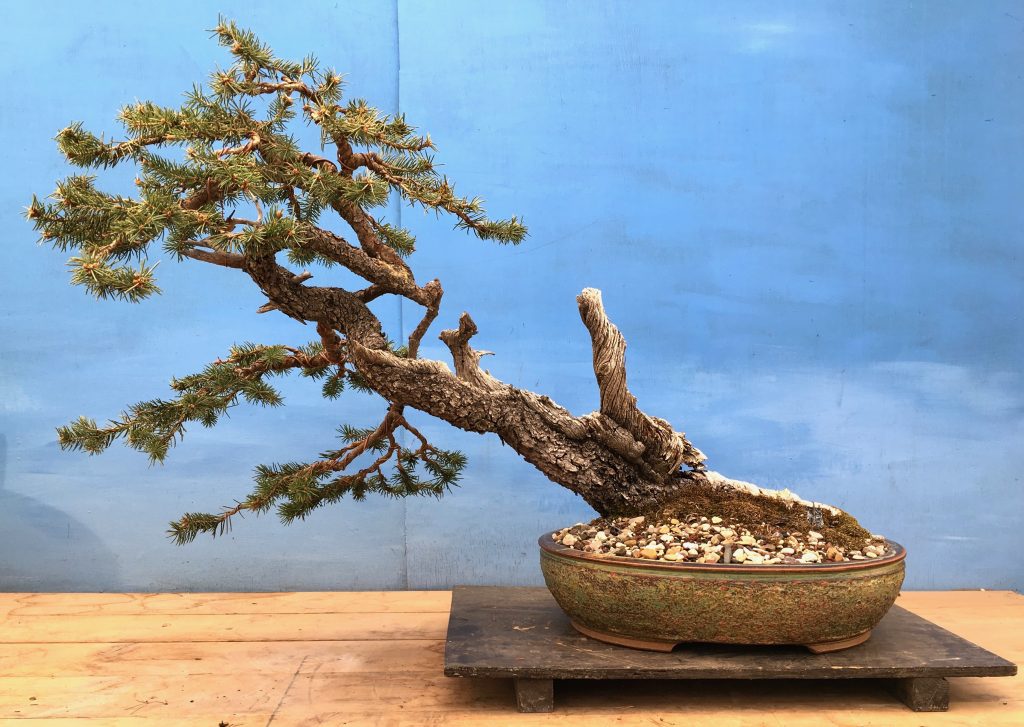
Colorado Spruce collected by Andrew in 2009.
You can see more of Andrew’s bonsai on his website.
Steve Tolley, UK
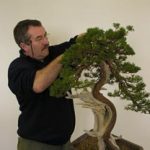
Steve is a full time bonsai professional and has realized one of his dreams to open his own bonsai school at his nursery. Here students can learn under Steve’s guidance the art that is bonsai.
English bonsai artist Steve Tolley began his bonsai education under the guidance of Dan Barton, and later studied with several bonsai artists including Japanese bonsai master Hotsumi Terakawa.
Steve was a recent winner of the BCI Writer, Artist Photographer Award 2005 and winner of the Noelanders Trophy VIII 2007.
Can you tell us a little about your style/approach to bonsai?
I always emphasise “working with the tree” not against it to my clients or students.
This can be interpreted as working on the tree at the right time of year, not forcing your will upon the tree, to choosing a design that is sympathetic to the trees trunk. Rather than creating some convoluted monstrosity that makes no use of the properties the tree presents.
Too often you will see a ‘master’ kill or damage a tree in a demo to show of their bending skill. This is one of my pet hates. Work with the tree, and the tree will repay you.
Remember! You can only kill it once!
Bonsai is living art. Respect life!
Do you have a quick piece of advice for beginners?
Try to find someone to guide you, whose work you like and you can relate too. Someone who actually creates bonsai, rather than someone who buys finished specimen bonsai. Or someone who talks bonsai but you never see them create a bonsai. There are a lot of the latter about.
Stick with that person who is creating bonsai that talk to you. Don’t jump from teacher to teacher otherwise you may get confused as from teacher to teacher there will be differences in approach.
Stick with that person until you have a good level of competence and understanding. Then dip your toe in the big ocean, and see what else it out there that you can add to your armoury.
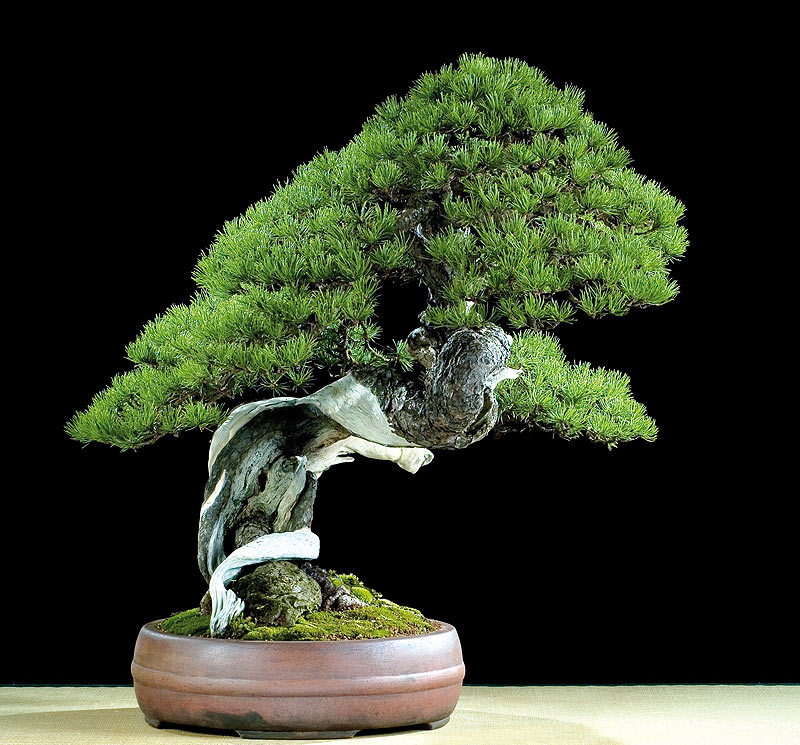
I worked on this tree and brought it too this level. And previously John Naka, Pius Notter and my mentor Dan Barton had all worked on this tree.
It is the Swiss Dragon. Mugo Pine.
To learn more about Steve, visit his website or contact him via his Facebook.
William Valavanis, USA
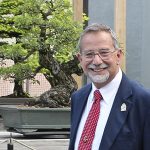
More than 50 years ago Bill Valavanis began his journey into the world of bonsai when his mother’s friend tried to start her own bonsai but found it hard going. Wayne Schoech, of BonsaiBark, says that no one living has done more for American bonsai than Bill Valavanis and when you look at his list of accolades it’s easy to see why (if you want to read about them all you’ll have to visit his Wikipedia page)
And so it won’t be surprising to learn that in October 2017 Bill was made the third inductee into the US Bonsai Hall of Fame.
Can you tell us a little about your style/approach to bonsai?
I study, grow and teach classical bonsai art, a highly refined elegant approach of bonsai. Established in 1829 this approach to bonsai is based on both art and horticulture and the triangular form is desired.
Do you have a quick piece of advice for beginners?
Don’t give up, keep trying.
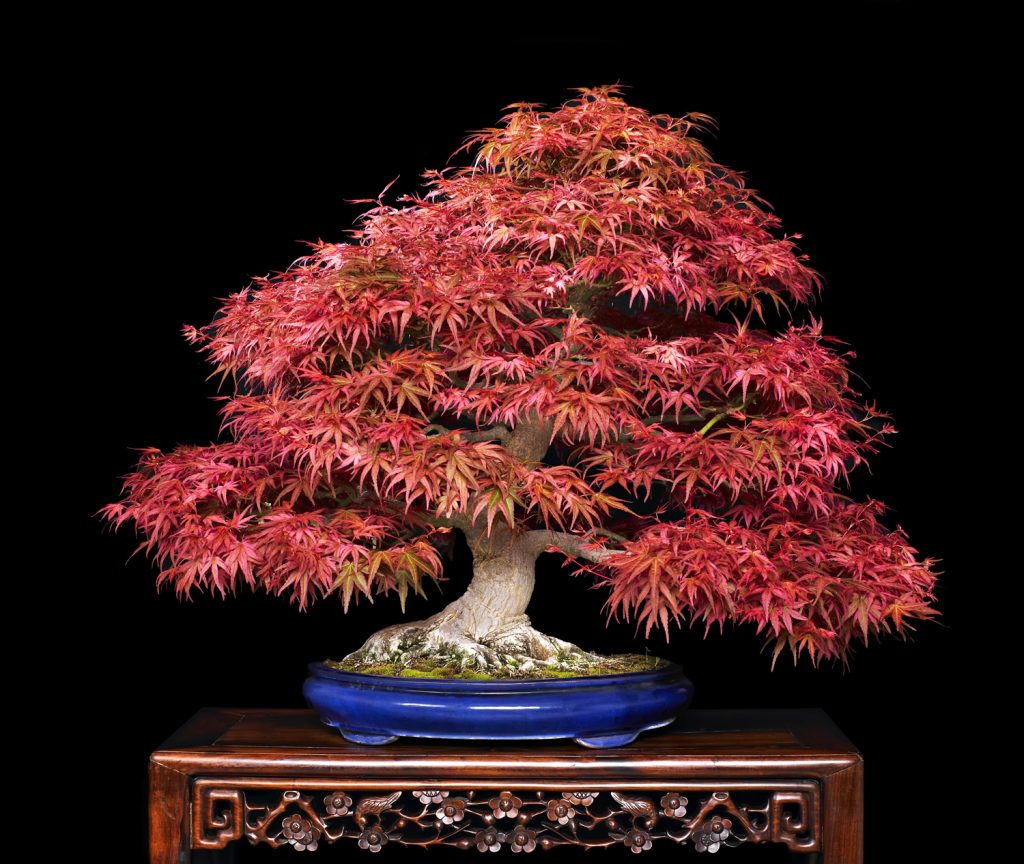
‘Seigen’ Japanese Maple
Peter Warren, UK
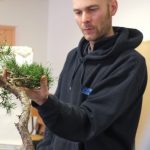
Peter Warren’s fascination with bonsai began during his trip to Japan in 2002 for the world cup. He then started going to Shunka-en Bonsai Museum to study. This study soon turned into an apprenticeship where he spent six years studying under Kunio Kobayashi in Japan. Apprenticeship completed, he came back home to the UK where the second phase of study began.
Since returning home there’s not much that Peter hasn’t done; he is a full time bonsai artist now and while doing all that that entails somehow managed to write one of the most popular books in the industry.
Can you tell us a little about your style/approach to bonsai?
Bonsai as an art form should reflect yourself and the aspects of bonsai that you enjoy personally. I appreciate the more natural seemingly untouched styles of tree that were produced over a hundred years ago in Japan, but others go for highly stylised and sculpted work. Either is fine as long as it is executed well and it reflects the person creating it and their defined aesthetic.
You must work with the tree and not against it. Bonsai is a collaboration between yourself and the tree, with the health of the tree being the utmost concern.
Do you have a quick piece of advice for beginners?
Understanding how trees grow as living objects is the first step, appreciating and empathising with their light, water and temperature requirements to thrive. If you can keep it alive, then you can worry about the style. Also pruning the tree should make it stronger by generating younger newer branches. It isn’t going to damage it.

European Beech
Erik Wigert, USA

Erik Wigert has been recognized through awards and articles for his talent and knowledge of this ancient art form. Since the early beginnings of the nursery Erik has focused himself on bonsai cultivation and production.
Currently Erik is not taking any bookings for programs or events. He is focusing on production at the nursery and spends 4 days a month teaching a workshop group geared towards more serious bonsai students. You can learn more about Erik on his website: Wigert’s Bonsai.
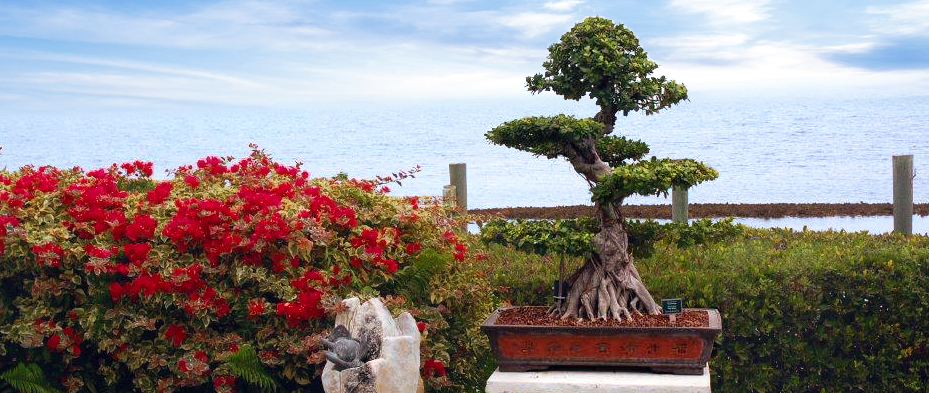
Vance Wood, USA
My history in bonsai begins in 1957 when I started admiring my brother’s bonsais. He had started growing them from seed using instructions from a book he ordered through the mail. I became fascinated, and started to read all of his stuff as he went off to the U of C at Berkeley.
I was eleven years old and I started with a Cottonwood seedling I found growing in the garden in our back yard, in Salt Lake City Utah. Shortly after those events my father received a good position in a large company, and the family was transferred to California.
I foundered for a few months until I encountered an old gentleman named Roy Wendlekin. He was more or less the club sensei of the Marin Bonsai Club. He guided me through the next couple of years. We became close friends and he more or less put me on the right direction. He too was self-taught.
Can you tell us a little about your style/approach to bonsai?
I am probably best known at this time for my work with Mugo Pines. The first tree I got my hands on in 1972 was a nursery Mugo Pine from Bordines Nursery. Actually if the truth be know the first tree I ever tried to grow was a Mugo Pine my parents bought me when I was 15. I did everything every body else did at the time; I killed it.
The Mugo from 1972? I still have the tree though I have redesigned in several times. I never consider a tree to be a lost cause; I consider this kind of tree to have developed a need for new ideas. I used to hear the question repeatedly: Why do you waste your time on nursery trees? My answer to this day: Why not?
At first I grew the Mugo out of convenience, they were obtainable, inexpensive and at a distance they did not look too bad. I would have much rather been using my time on Japanese White Pine but they were not available at a cost less than a small car. As I was able to find out latter JWP’s were far more difficult to cultivate than Mugos.
However, before too long what I was doing to the Mugo Pine attracted attention. It seems no one else was able to grow them, and in the end it was found that I was growing them different than everyone was being taught.
Using the Japanese Black Pine as the benchmark for two needle Pine was proving to be marginally un-usable and counter-productive with growing Mugo Pines. The fact that it was not responsive to the techniques used in Japanese Black Pines the Mugo had become relegated to the realm of pariah trees. Many claimed making a bonsai of Mugo Pine was not possible or practicle.
From this point on many of the professionals began to discover that there are two kinds of two needle Pines that had to be treated differently, the Mugo was at the opposite end of that spectrum from the JBP. Today this is taught as the concept of single flush and double flush Pines.
Do you have a quick piece of advice for beginners?
In reality I am self-taught. I have never been to Japan and I have never been taught by, or studied with, any of the big names in today’s bonsai world. I have in the past caught flack because of disgruntled people trying to discredit some of my ideas on the basis of my lack of formal education in bonsai.
In my sixty years of growing bonsai I think I have been marginally successful, and if there is a mistake that can be made I have probably made it, except one: I never quit, which is the one and most fatal mistake someone can make.
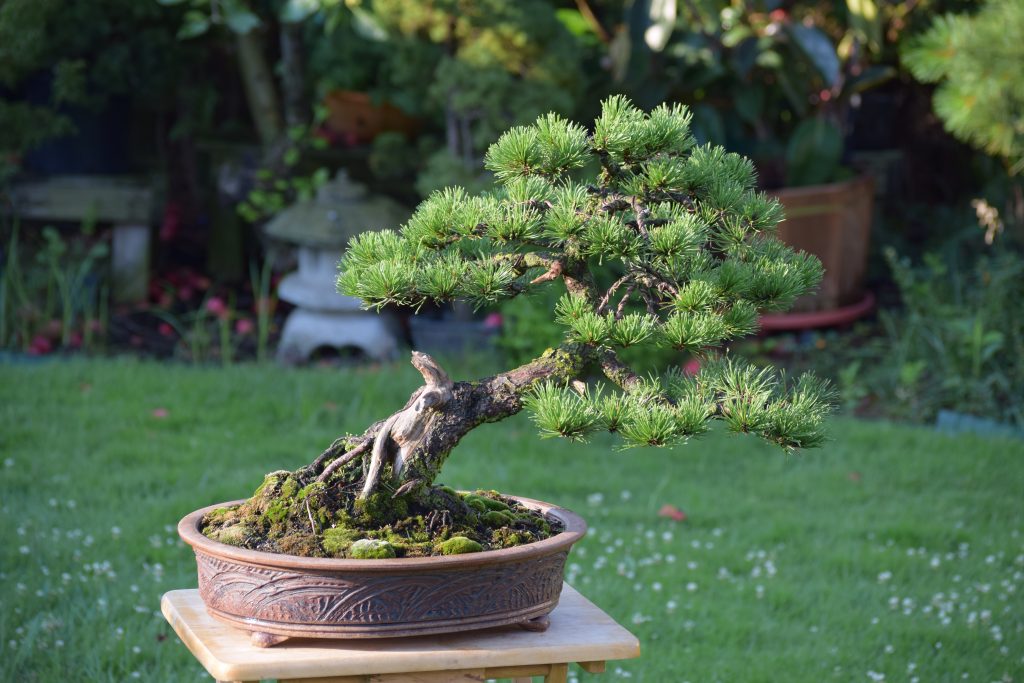
That’s all folks!
Thank you to everyone who was kind enough to reply to our invitation and who took the time to send us photos and information.
And while we did our best to find the most influential bonsai artists from outside Japan, we are sure that we missed plenty of other worthy people. If you know of someone who should have been included, let us know in the comments section below.

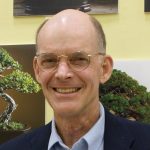
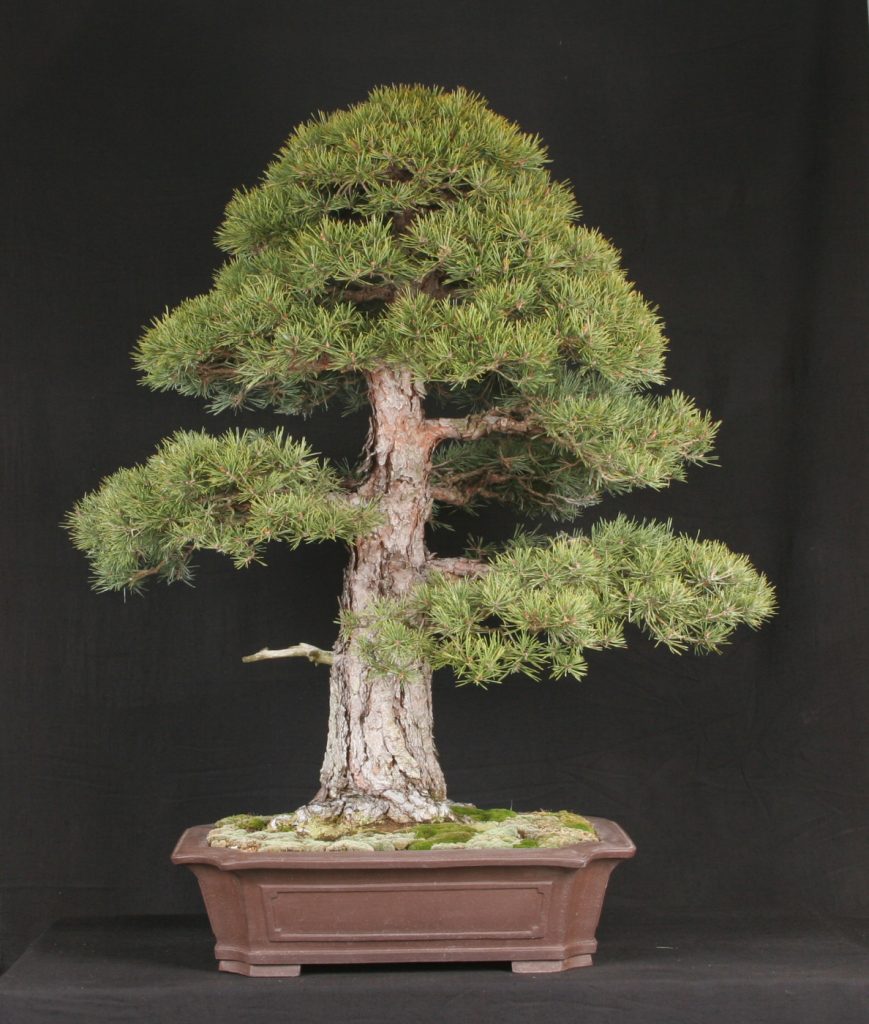
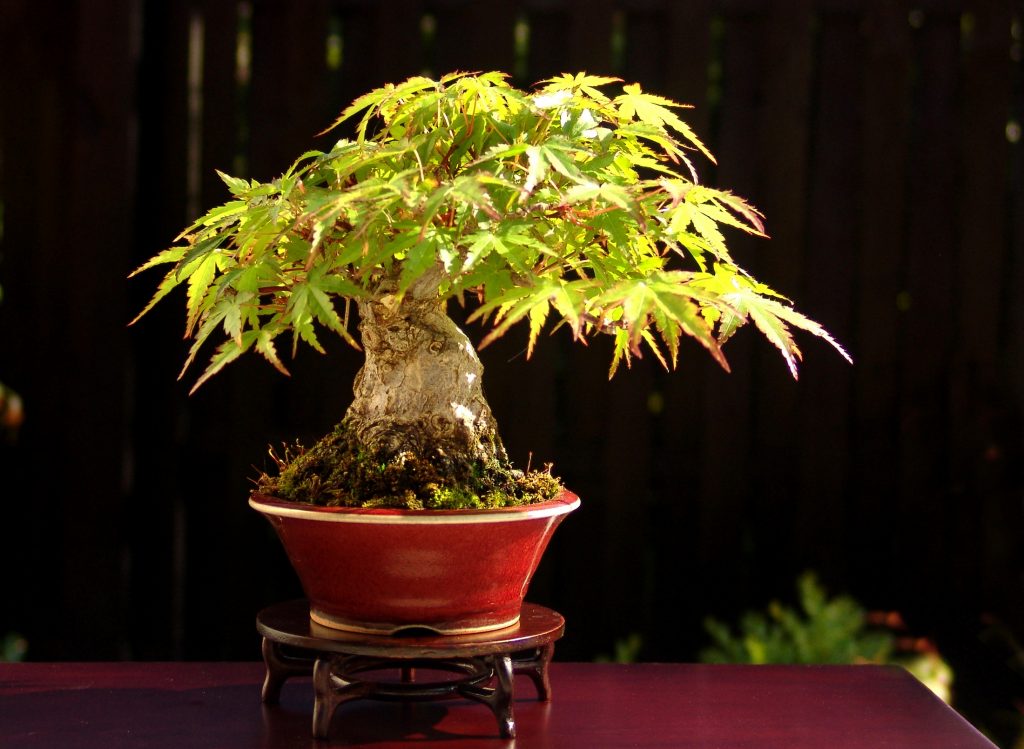



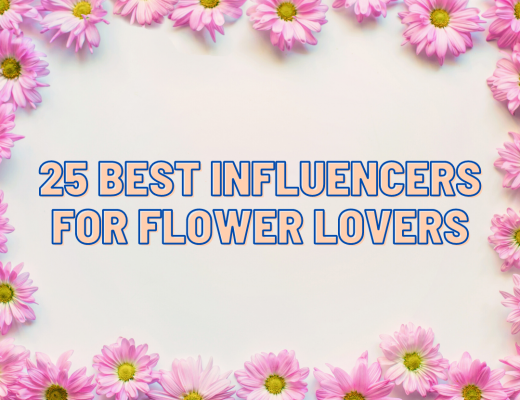
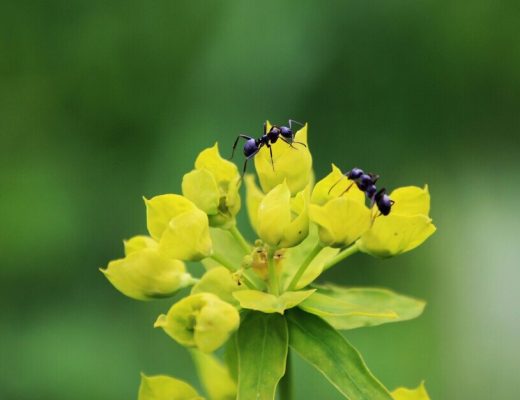
Lee Cheatle
July 7, 2018 at 4:19 amI very much appreciate the time and effort it took to put this together and am honored to be on the list of the those who have been influential bonsai artists of the West.
To the list above, I would like to give credit to, from the American NW, those who have been highly influential to the art of bonsai and been mentors to me:
David DeGroot, Joe Harris III, Masa Furukawa (deceased), Bob Laws, Scott Elser, Alan Taft and Dennis Vojtilla.
Sean
July 9, 2018 at 1:06 pmHi Lee,
It was a pleasure working with everyone on this article.
Thanks for listing out a few more great artists; we can’t feature everyone in the article so it’s nice that they get a mention in the comments.
Sean
Enrique Castaño
July 9, 2018 at 10:34 amThis post is leaving lots of the truly influential people in bonsai outside of Japan. Should contact paul fron who is bonsai or wbff, bci, abs, felab etc to get a real list
Sean
July 9, 2018 at 1:07 pmHi Enrique,
You’re right, this list is not perfect but all the people featured are influential in one way or another.
Who are some people you would like to see featured?
Sean
Ann Mudie
July 10, 2018 at 5:36 amIn New Zealand Tony Bebb (from Australia) has been hugely influential in educating us. He travels over ‘the ditch’ several times a year to work with ùs on our trees.
Sean
July 10, 2018 at 2:00 pmThanks for mentioning Tony, Ann. Just goes to show how many great artists are around.
Graham Morris
August 20, 2018 at 11:35 pmBjorn Bjornholm is a young, but very experienced bonsai artist. He served his apprenticeship under Keiichi Fujikawa at Kouka-en nursery in Osaka. After nearly ten year in Japan he recently returned to Nashville USA to start his own bonsai garden.
Sean
August 21, 2018 at 12:10 pmThanks Graham, we did reach out to Bjorn but I think he was a little busy setting up his nursery.
For anyone reading, Bjorn’s YouTube channel is also fantastic.
Elle
July 11, 2019 at 6:21 pmHi, Great article Thanks!
Who is the most stylish Bonsai gardener in Sydney? I’m looking for a gardener with a great eye to shape a big existing tree into a large bonsai shape.
Michel Cuypers
November 2, 2019 at 6:22 amYou forgot Marc Noelanders. No list like that is complete without him.
Bonsai
April 16, 2020 at 1:59 amVery good article. Thanks for sharing.
Some one unknown to me. In my opinion some artists from southern Europe are missing.
David Cortizas is a bonsai professional from Spain, he has the biggest bonsai channel in YouTuve in the world. more than 300,000 followers and a school in Cadiz. I study in Taisho-en with Nobuichi Urushibata.
Mauro Stemberger. From Italy.
He was president of the UBI from 2008 to 2010 and currently offers demonstrations and workshops for many organizations around the world. His creations, works and copies can often be seen on social media. His last demonstration was at the Noelanders Trophy. The most important bonsai event in Europe.